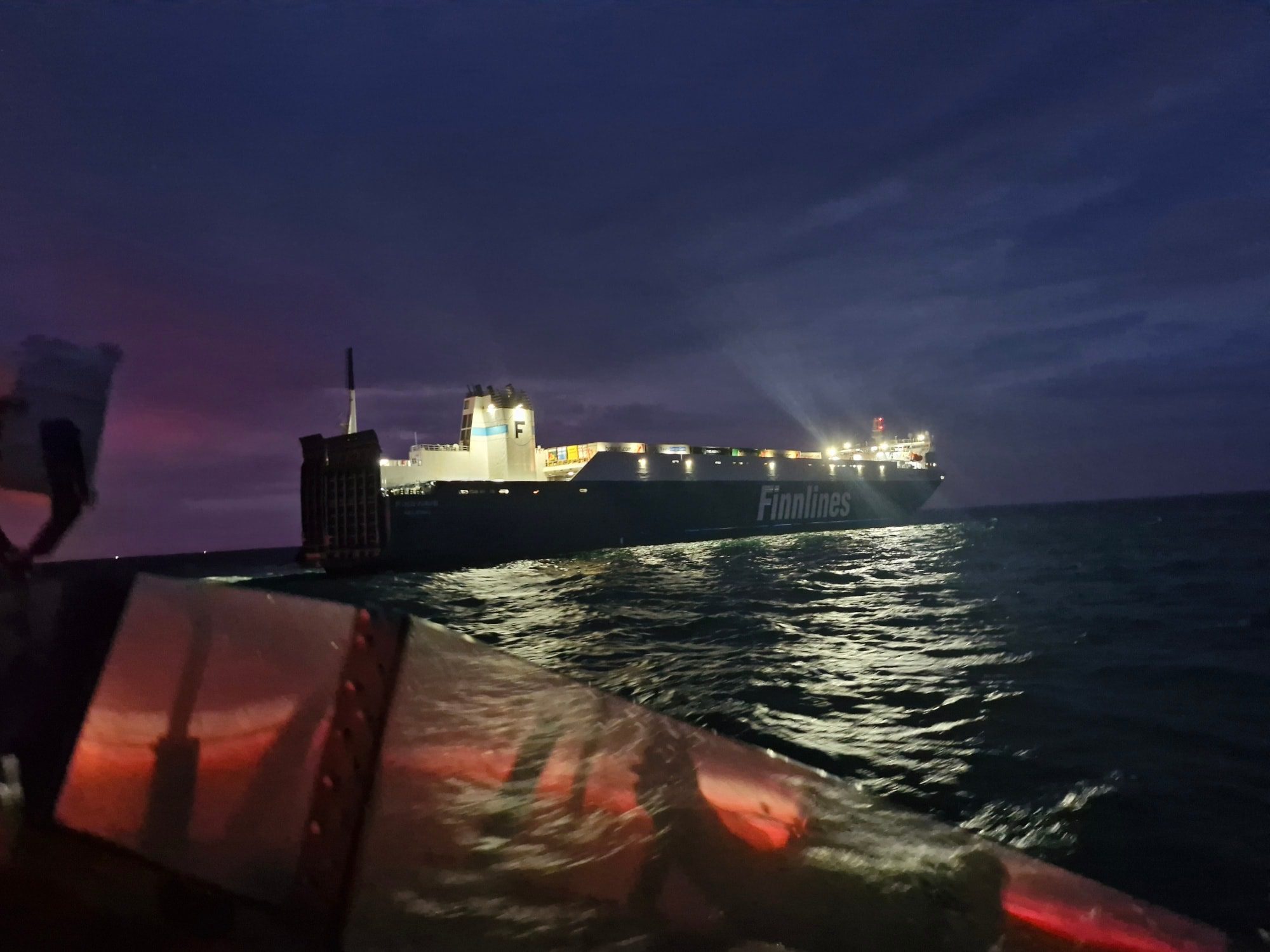By Anne Kauranen and Terje Solsvik
HELSINKI, Oct 10 (Reuters) – A subsea gas pipeline and a telecommunications cable connecting Finland and Estonia under the Baltic Sea have been damaged in what may have been a deliberate act, the Finnish government said on Tuesday.
NATO Secretary General Jens Stoltenberg said NATO was sharing its information over the damage and stands ready to support the allies concerned. Finland joined the military alliance in April, while Estonia has been a member since 2004.
The Balticconnector gas pipeline was shut early on Sunday on concerns that gas was leaking from a hole in the 77-km (48-mile) pipeline. Finnish operator Gasgrid said it could take months or more to repair.
“It is likely that damage to both the gas pipeline and the communication cable is the result of outside activity. The cause of the damage is not yet clear, the investigation continues in cooperation between Finland and Estonia,” Finnish President Sauli Niinisto said in a statement on Tuesday.
Finnish Prime Minister Petteri Orpo said the damage to the pipeline was “worrying,” but that Finland’s energy supply remained stable and that the damage to the telecommunications cable did not affect Finland’s overall connectivity.
“It is too early to draw conclusions on who or what caused the damage,” Orpo told a press conference.
Gas account for 5% of Finland’s energy supply, he added.
DELIBERATE OR ACCIDENTAL?
A spokesperson for the Finnish defense forces said it did currently not see any military threat against Finland.
The Finnish bureau of investigation has initiated an investigation into the external damage to the pipeline.
“We are still verifying if the damage is caused deliberately or accidentally,” the bureau said, though it added that the size of the damage was such that it indicated deliberate action.
Causing this kind of damage to the pipeline requires “special knowledge,” the Finnish national bureau of investigation said.
“This act could not have been done by an ordinary person,” Detective Inspector Timo Kilpelainen told reporters.
European gas prices rose on Tuesday afternoon following the news, with the benchmark front-month Dutch contract touching 49.75 euros a megawatt hour (MWh) according to LSEG data, its highest level for six months.
Prices were already up on Tuesday due to fears over tensions in the Middle East but expectations that outside activity caused the pipeline damage pushed prices in the nervous market higher.
The Finnish government said repairs would take months, and that the cost of gas in Finland could slightly increase over the winter as a result of the leak but that electricity prices would likely not be affected significantly.
“The fall in pipeline pressure was quite fast, which would indicate it’s not a minor breach. But the cause of it remains unclear,” said a Baltic energy official with knowledge of the situation, who spoke to Reuters on condition of anonymity.
The pipeline between Inkoo in Finland and Paldiski in Estonia crosses the Gulf of Finland, an arm of the Baltic Sea that stretches eastwards into Russian waters and ends at the port of St Petersburg.
NORD STREAM
In 2022, the larger Nord Stream gas pipelines which cross the Baltic Sea between Russia and Germany were damaged by explosions that authorities have said were deliberate acts of sabotage.
The Balticconnector pipeline opened in December 2019 to help integrate gas markets in the region, giving Finland and the Baltic nations of Estonia, Latvia and Lithuania more flexibility of supply.
Elering and Gasgrid have both said they did not anticipate shortages of gas even if the pipeline were to remain inoperable during winter.
Lithuanian gas system operator Amber Grid said Latvia’s Incukalns gas storage has switched from storing gas to pumping it out immediately after the Balticconector damage, in order to supply Estonia.
Finland last year leased a floating storage and regasification unit (FSRU) to receive liquefied natural gas (LNG), replacing supplies from Russia which were cut in the wake of Moscow’s invasion of Ukraine.
Much of Finland’s LNG imports come from the United States, LSEG data shows.
Situated at Inkoo, the Exemplar FSRU vessel has supplied gas to Estonia via the Balticconnector.
“(It’s) not a big deal for Estonia and Latvia because a lot of their gas is stored in Latvian storage, but Finns will not be able to get their gas from Latvian storage,” said a source with direct knowledge of Baltic gas supplies.
Finland has a second LNG import terminal in Hamina, and “the continuity of gas supply is secured in the coming winter season,” national operator Gasgrid said in a statement.
Finnish telecommunications operator Elisa separately said the damaged cable was primarily used for backup purposes and that the company’s services had not been disrupted.
(Reporting by Terje Solsvik and Nerijus Adomaitis in Oslo, Anne Kauranen in Helsinki, Anna Ringstrom in Stockholm, Andrius Sytas in Vilnius, Marta Frackowiak in Gdansk, Louise Rasmussen in Copenhagen, Susanna Twidale in London; Julia Payne and Bart Meijer in Brussels; editing by Gwladys Fouche, Susan Fenton and Jonathan Oatis)
(c) Copyright Thomson Reuters 2023.

 Join The Club
Join The Club












